Abstract
Compound BW759 (9-[2-hydroxy-1-(hydroxymethyl)ethoxymethyl]guanine) was shown to be about 230 times more active than acyclovir (9-[2-hydroxyethoxymethyl]guanine) (ACV) against Equid herpesvirus type 1 infection in Syrian hamsters and was more effective against Aujeszky's disease in mice. The therapeutic superiority of BW759 over ACV was greater than expected from quantitative inhibitory results in tissue culture with these viruses. When administered to hamsters at dose rates sufficient to prevent any Equid herpesvirus type 1-induced mortality (100 mg of ACV per kg per day; 3 mg of BW759 per kg per day), BW759 inhibited viral multiplication, as judged by histopathological observations, clinical chemistry, and liver virus concentrations, to a greater extent than ACV. Compound BW759 was particularly effective when administered via the oral route. The reasons for the superiority of BW759 over ACV remain to be elucidated.
Full text
PDF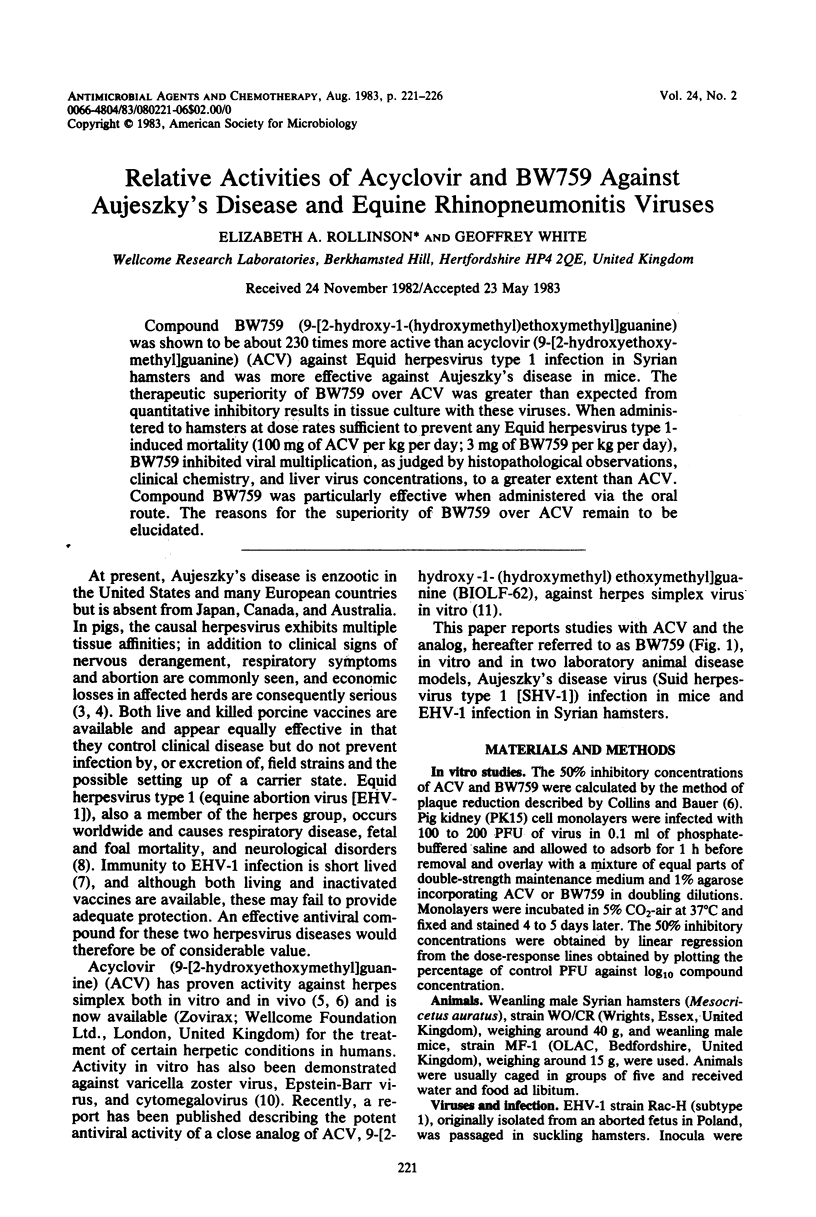
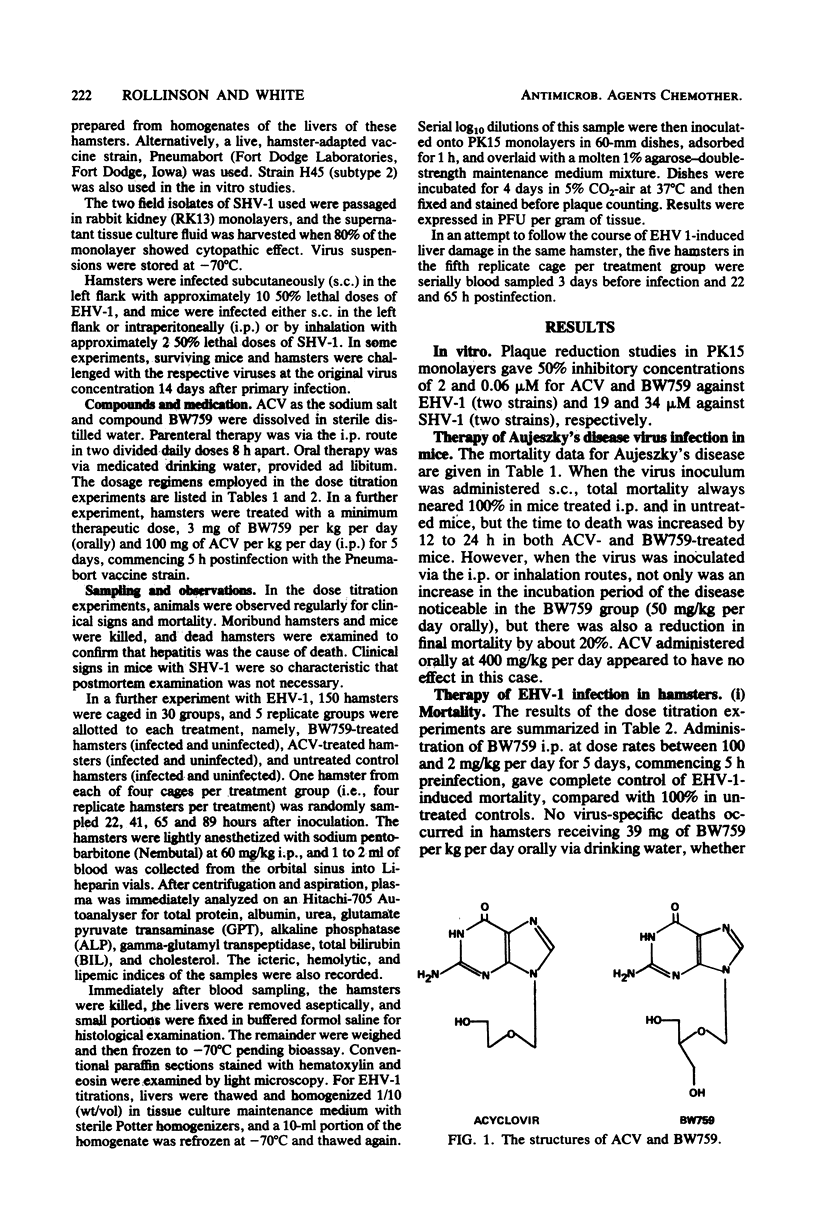

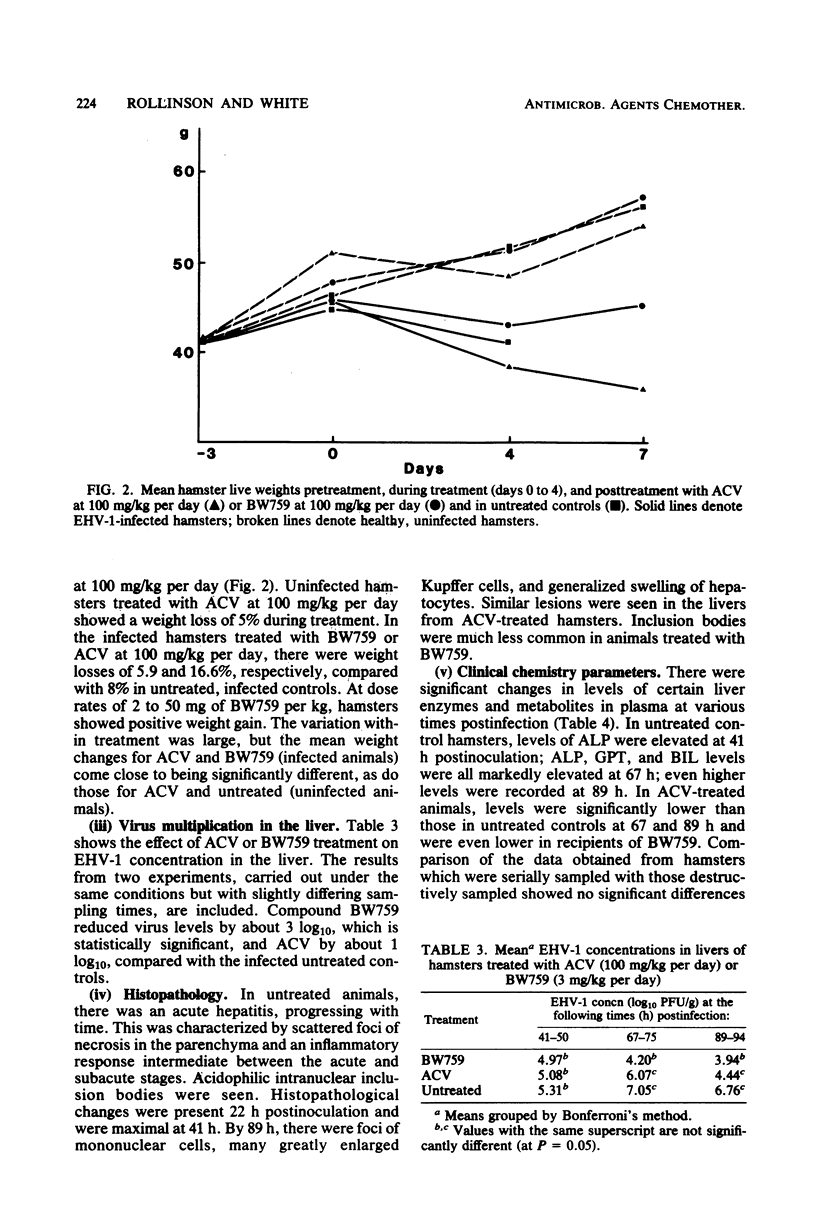
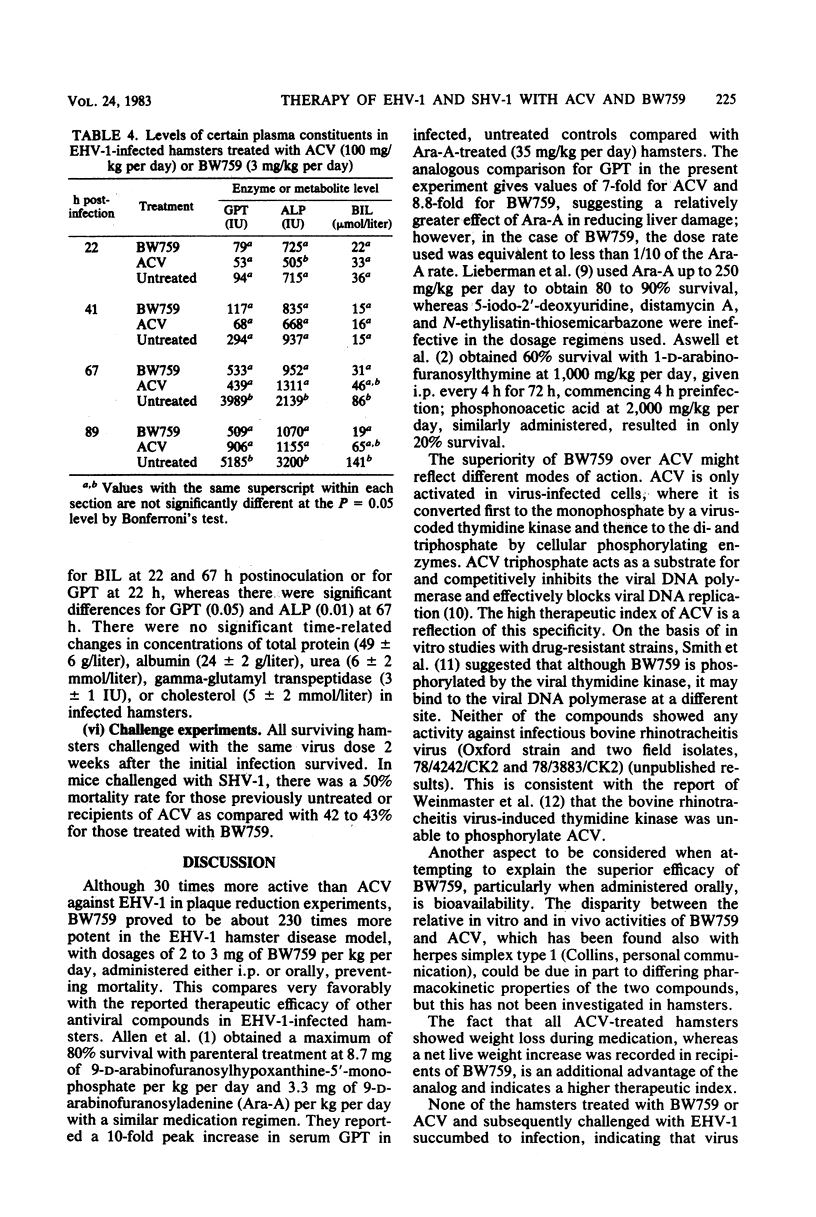
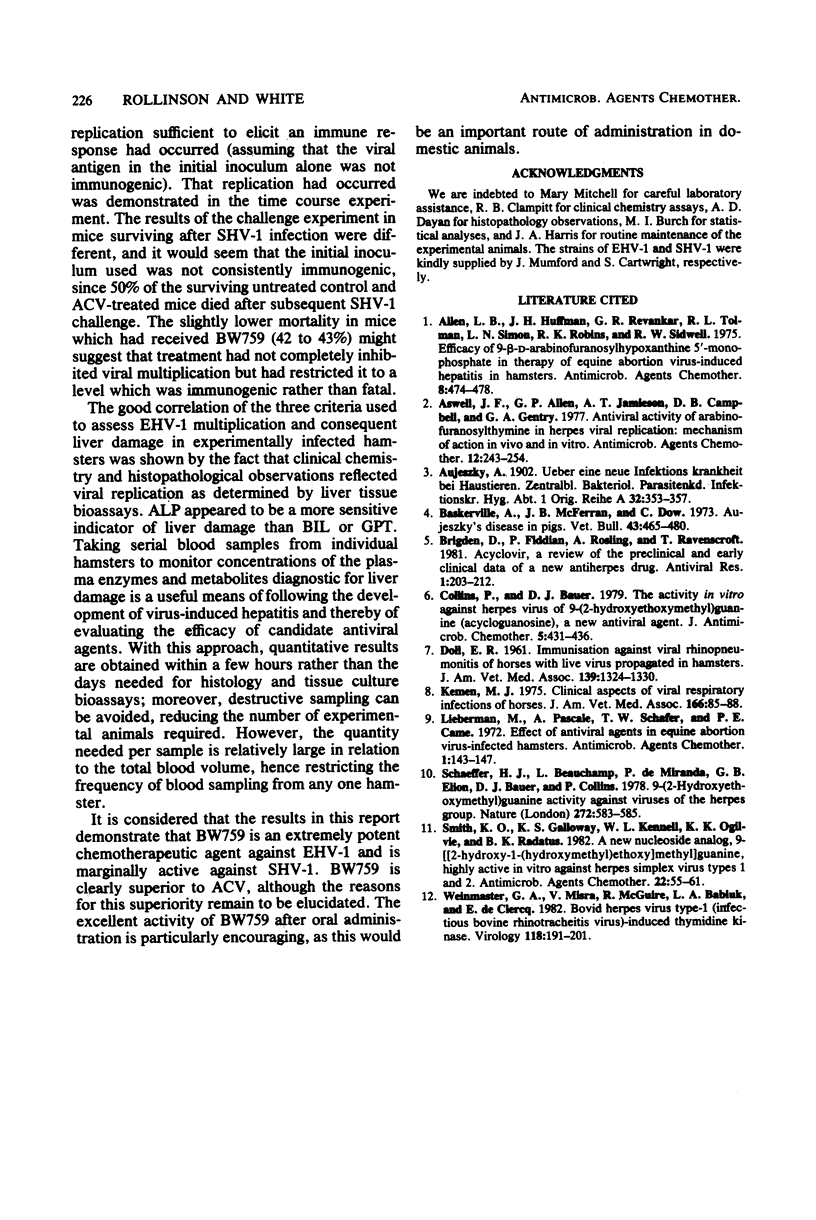
Selected References
These references are in PubMed. This may not be the complete list of references from this article.
- Allen L. B., Huffman J. H., Revankar G. R., Tolman R. L., Simon L. N., Robins R. K., Sidwell R. W. Efficacy of 9-beta-D-arabinofuranosylhypoxanthine 5'-monophosphate in therapy of equine abortion virus-induced hepatitis in hamsters. Antimicrob Agents Chemother. 1975 Oct;8(4):474–478. doi: 10.1128/aac.8.4.474. [DOI] [PMC free article] [PubMed] [Google Scholar]
- Aswell J. F., Allen G. P., Jamieson A. T., Campbell D. E., Gentry G. A. Antiviral activity of arabinosylthymine in herpesviral replication: mechanism of action in vivo and in vitro. Antimicrob Agents Chemother. 1977 Aug;12(2):243–254. doi: 10.1128/aac.12.2.243. [DOI] [PMC free article] [PubMed] [Google Scholar]
- Brigden D., Fiddian P., Rosling A. E., Ravenscroft T. Acyclovir - a review of the preclinical and early clinical data of a new antiherpes drug. Antiviral Res. 1981 Nov;1(4):203–212. doi: 10.1016/0166-3542(81)90011-5. [DOI] [PubMed] [Google Scholar]
- Collins P., Bauer D. J. The activity in vitro against herpes virus of 9-(2-hydroxyethoxymethyl)guanine (acycloguanosine), a new antiviral agent. J Antimicrob Chemother. 1979 Jul;5(4):431–436. doi: 10.1093/jac/5.4.431. [DOI] [PubMed] [Google Scholar]
- DOLL E. R. Immunization against viral rhinopneumonitis of horses with live virus propagated in hamsters. J Am Vet Med Assoc. 1961 Dec 15;139:1324–1330. [PubMed] [Google Scholar]
- Kemen M. J., Jr Clinical aspects of viral respiratory infections of horses. J Am Vet Med Assoc. 1975 Jan 1;166(1):85–88. [PubMed] [Google Scholar]
- Lieberman M., Pascale A., Schafer T. W., Came P. E. Effect of antiviral agents in equine abortion virus-infected hamsters. Antimicrob Agents Chemother. 1972 Feb;1(2):143–147. doi: 10.1128/aac.1.2.143. [DOI] [PMC free article] [PubMed] [Google Scholar]
- Schaeffer H. J., Beauchamp L., de Miranda P., Elion G. B., Bauer D. J., Collins P. 9-(2-hydroxyethoxymethyl) guanine activity against viruses of the herpes group. Nature. 1978 Apr 13;272(5654):583–585. doi: 10.1038/272583a0. [DOI] [PubMed] [Google Scholar]
- Smith K. O., Galloway K. S., Kennell W. L., Ogilvie K. K., Radatus B. K. A new nucleoside analog, 9-[[2-hydroxy-1-(hydroxymethyl)ethoxyl]methyl]guanine, highly active in vitro against herpes simplex virus types 1 and 2. Antimicrob Agents Chemother. 1982 Jul;22(1):55–61. doi: 10.1128/aac.22.1.55. [DOI] [PMC free article] [PubMed] [Google Scholar]
- Weinmaster G. A., Misra V., McGuire R., Babiuk L. A., DeClercq E. Bovid herpesvirus type-1 (infectious bovine rhinotracheitis virus)-induced thymidine kinase. Virology. 1982 Apr 15;118(1):191–201. doi: 10.1016/0042-6822(82)90332-4. [DOI] [PubMed] [Google Scholar]


